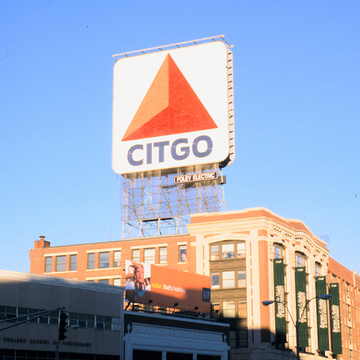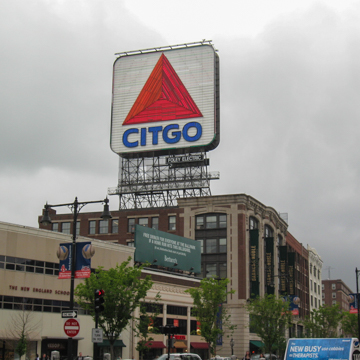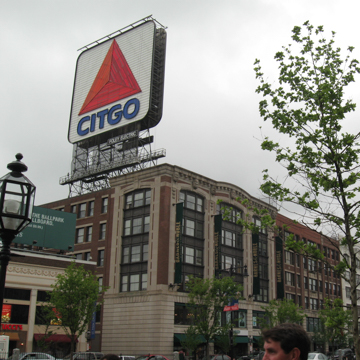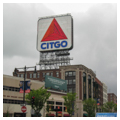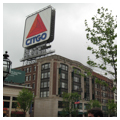Boston is notable for a number of significant signs that enliven its historic skyline, preserved by cultural affection and corporate commerce. Early twentieth-century signs still mark two Boston cultural institutions: the antique Boston YMCA (1912, 316 Huntington Avenue) is lighted by electric bulbs; and the red neon Boston Symphony POPS (see FL6; 1934, C. I. Brink, 301 Massachusetts Avenue), the oldest of its type still in use in the city, is erected every season. The most famous commercial signs are the giant displays along the Charles River. The Cambridge SHELL sign (1933, 820 Memorial Drive, NR) maintains its original shell shape as the oldest advertising “spectacular” in the United States. The nationally famous Kenmore Square CITGO sign (1965, 660 Beacon Street) pulses a red delta set in a field of white tubes outlined in blue, a pop art icon for Fenway Park home runs. The North End boasts a trio of colorful Italian restaurant neon signs, including Cantina Italiana (c. 1950, 346 Hanover Street), Modern Pastry (1954, 257 Hanover Street), and Regina Pizzeria (1949 replica, 11½ Thatcher Street). Finally, in Brighton an authentic Dunkin' Donuts sign (1957, 214 N. Beacon) survived in the original orange and pink lettering until April 2008, when it was placed in storage by the company; its future is unknown.
You are here
Kenmore Square CITGO Sign
If SAH Archipedia has been useful to you, please consider supporting it.
SAH Archipedia tells the story of the United States through its buildings, landscapes, and cities. This freely available resource empowers the public with authoritative knowledge that deepens their understanding and appreciation of the built environment. But the Society of Architectural Historians, which created SAH Archipedia with University of Virginia Press, needs your support to maintain the high-caliber research, writing, photography, cartography, editing, design, and programming that make SAH Archipedia a trusted online resource available to all who value the history of place, heritage tourism, and learning.















